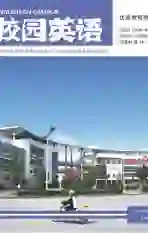An Analysis of the Vocabulary in Southwest Mandarin Dialects
2016-07-04张辩辩李莎
张辩辩 李莎
【Abstract】Kunming Dialect as one of Yunnan area of southwest mandarin dialects has certain research value. This paper explores the vocabulary in Kunming dialects. First,it talks about the characteristics of regional vocabulary. Then, it investigates phonetics. Finally it proposes the social meanings of studying southwest regional dialects.
【Key words】sociolinguistics; Kunming mandarin dialect; vocabulary; phonetics
I. Introduction
Southwest mandarin area covers nine provinces and has been used by about two hundred and fifty million people. Kunming dialect is a variety of southwest mandarin dialects which owns its special characteristics. By studying the vocabulary in Kunming dialect, it is helpful to enrich language resources, and to provide vivid materials for Chinese history research, moreover, may for sociology and ethnology study.
II. The Characteristics of Kunming Vocabulary
In Kunming, people have rice as their main food. Thus, there are many unique words about food. For example, “Erkuai” is a kind of special snack that being made up by glutinous rice. In north China, people make “Jiaozi” in Spring Festival. But in Kunming people have “Erkuai” instead of “Jiaozi” those days. “Mixianer”(rice noodles)is another famous snack in Kunming. It looks like noodles in north, but made up by rice. These special snacks native names form a list of unique words in Kunming dialects. Besides, the same kind of food may have different names in local place. Take “Tangyuan” as an example, it is called “Tang-tuan” in Kunmimg dialect.
In term of address, Kunming people would like give their children two names. One of the name is used in school, the other is called by relatives in ordinary days. For instance, if a childs name is “Y”, his or her families will call him or her “Xi Y”, just like “Xiao Y” in Mandarin. Besides, Kunming people usually call children “Wawa” and call their shoes “Haizi”. If you dont know this, you will be confused about what natives refer to. Moreover, Kunming people call their fathers elder brother “Dadie” instead of “Dabo” which means “uncle”.
In a word, all of the special words about diet and address formed a vivid word list in Mandarin varieties. They are popular among native speakers and keep the unique characteristics of Kunming dialect. So it is interesting and meaningful to keep them.
III. The Phonetics
Wardhaugh has said that it is impossible to speak English without an accent. Therefore there is no such thing as an ‘unaccented English. So does Chinese. Sometimes speakers from north China cannot understand correctly and immediately what speakers from Kunming talks about even though they address things the same name, this is resulted by accent.
In Kunming dialect, people pronounce “sh” like “s”. For instance, they read “Shiyuan” (ten yuan) sounds like “Siyuan”(four yuan). Another obvious accent is that they pronounce “a” instead of “an” in Chinese. Examples at this point are “Chifa” (have meal), “Yidianba” is one oclock and thirty minutes.
Apart from what mentioned above, there are some special pronunciations in Kunming dialect. In Kunming dialect, “w” pronounced like the fricative labiodental consonant “f” in English, such as “Wu” (five) in Mandarin will sounds like “fu” (clothes). There are speech sounds that totally different from the Pinyin in Mandarin. For example, “cold” is not “Liang” but “Zha”; people go to a bazar is “Gangai”; “Shuaishuai” in Kunmings dialect means “eat”.
These special pronunciations combined with traditional ways of speaking to form a special dialect. It is interesting and useful to master some knowledge about it. After knowing these laws, northern people will feel a bit easier to understand southern people. It can enrich Mandarin and develop it in some degree.
IV. Conclusion
This paper investigates vocabulary in Kunming dialect from two aspects: regional words and phonetics. As to words, it mainly summarize some distinctions in diet words and forms of address. Kunming dialect is a part of folk custom culture and the folk custom culture belongs to national culture. Studying dialect words can enrich language resources, provide vivid material for Chinese history research. It also encourage communications between regions.
References:
[1]李榮.汉语方言区分[J].方言,1989(1):241-259.
[2]Wardhaugh,R.An Introduction to Sociolinguistics(Third edition)[M].北京:外语教学与研究出版社,2008:21-53.
作者简介:
张辩辩(1990-),女,河北石家庄人,河北师范大学外国语学院外国语言学及应用语言学专业2014级硕士研究生。
李莎(1993-),女,河北省石家庄人,河北师范大学外国语学院英语学科教学专业2015级硕士研究生。
